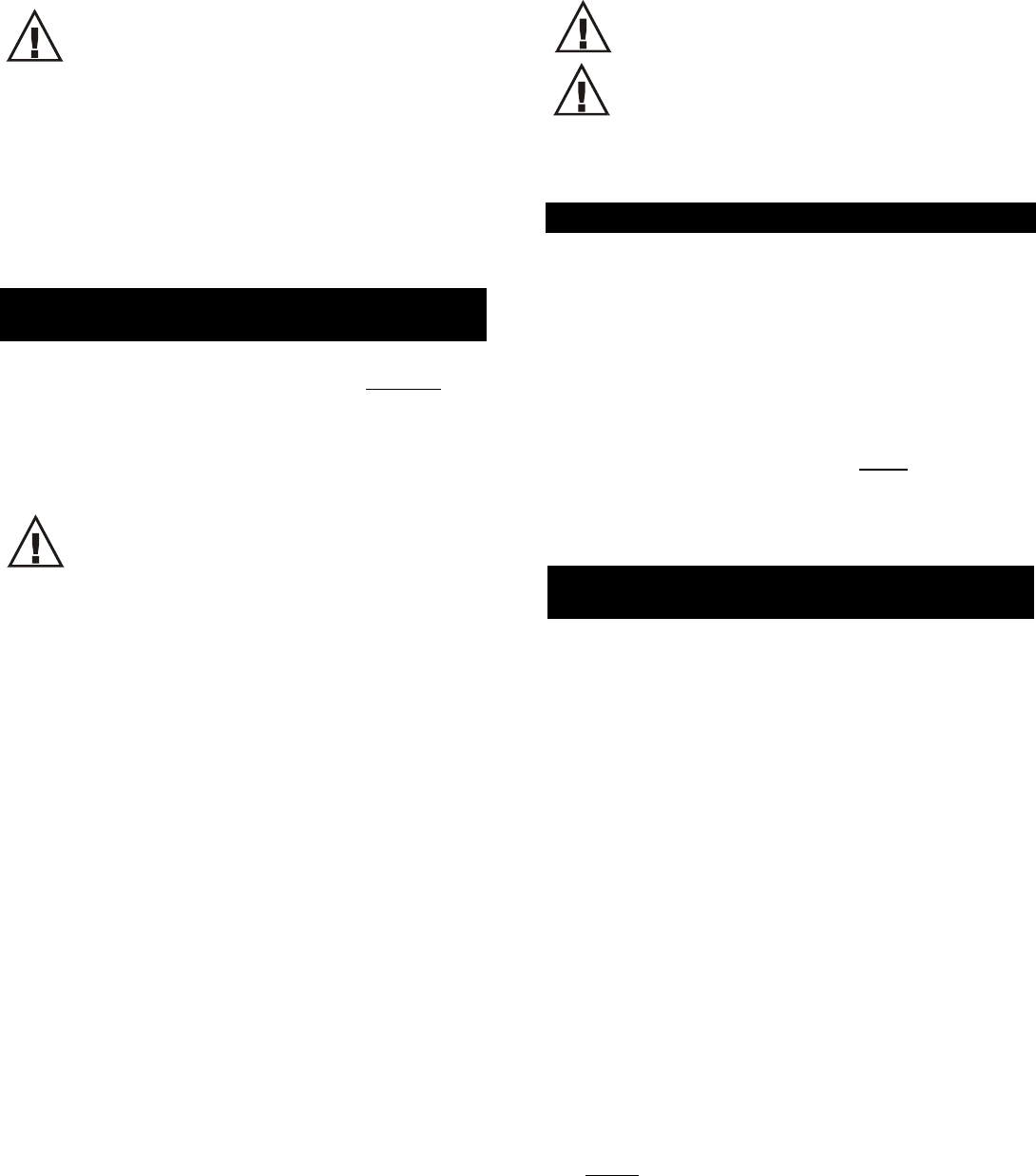Special offers from our partners!

Find Replacement BBQ Parts for 20,308 Models. Repair your BBQ today.

regulations. In the absence of local codes, installation
must conform to the National Fuel Gas Code, ANSI
Z21.58a-1999*CGA 1.62-M99.
7
NEVER USE NATURAL GAS IN A UNIT
DESIGNED FOR LIQUID PROPANE OR THE
REVERSE. IF YOU WISH TO CONVERT
YOUR GRILL FROM ONE TYPE OF GAS TO THE
OTHER, PLEASE CONTACT YOUR LOCAL DEALER
OR DISTRIBUTOR
.
Never connect an unregulated propane gas cylinder
or unregulated natural gas to your gas grill (Note:
most homes equipped with natural gas have a
regulator near the gas meter.
USER SAFETY INFORMATION OF PROPANE
MODELS
Your PGS grill is designed to operate on Propane
Gas regulated at a gas pressure of 11" water column
(W.C.) (2.7kPa). If you are hooking your grill into
"System LP" which fuels your home, please be certain
that you are at this pressure.
Operating your grill at pressure higher
or lower than recommended may
damage the grill or result in a hazard or
poor performance.
A regulator adjusted to this pressure must be installed
in the gas supply line before the grill is connected to
the propane source. PGS propane gas grills include
an 11" W.C. regulator and a "TYPE II" Cylinder
Connection Device. This system complies with the
specifications and requirements of ANSI Z21.58a-
1999*CGA 1.62-M99 standards. This system can
only be used with a "quick couple" type of tank. Our
regulated hoses include an excess flow safety system
that will limit the flow of gas to your grill in the event of
leaking gas or a damaged hose.
PLEASE NOTE. In the event that you
inadvertently have the valves of your grill turned
to the "ON" position, and then open the valve on
top of your tank, the excess flow device will
activate and shut off the flow of gas. If this
should occur, turn the valves to the “OFF”
position on your grill head, then the valve on the
tank. Wait two minutes and then open the valve
on the tank BEFORE turning the valves of your
grill head. Always turn on the valve at the top of
your tank and then the valves to your grill head to
the “ON” position.
The safety system detailed above has been
incorporated into your PGS gas grill to provide you
and your family the maximum in safety when
operating the grill.
PLEASE DO NOT CHANGE THE LP HOSE OR USE
WITH A STANDARD 20 LB. P.O.L.
CYLINDER.
TURN VALVE THAT IS LOCATED AT THE
TOP OF TANK TO "OFF" WHEN GRILL IS
NOT IN USE.
DO NOT CONNECT THE GRILL TO A PROPANE GAS
CYLINDER GREATER THAN 20 LB. CAPACITY.
PROPANE CYLINDER FILLING
Federal Law requires any tank used for a gas grill
must include an overfill protection device. If you
are uncertain whether your tank complies, check with
selling dealer. Please do not allow a fueling station
operator to change or modify this safety system on
your propane cylinder.
When the hose is disconnected from the tank, the
flow of gas is safely shut off. You must
still shut off
the main tank valve located at the top of the tank
when transporting your tank or when the unit is not in
use.
PROPANE CYLINDER FILLING AND HANDLING
SAFETY TIPS
Be certain tank is equipped with an overfill
protection device.
Do not modify hose or LP fittings. Contact a local
dealer or distributor if tank, hose or fittings need
replacement.
If it is evident there is excessive abrasion or wear,
or the hose is cut, it must be replaced prior to the
grill being operated. Please see your local PGS
dealer/distributor or call PGS for an exact
replacement.
Store propane tank outdoors in a cool, well-
ventilated area. Never store extra tanks in, on, or
around your grill.
Turn off tank when not in use.
Transport tanks upright ONLY.
Never allow a tank to be overfilled. 100% full tank
holds only 4.5 gallons of propane.
Inspect your grill cabinet often to ensure that
ventilation openings in sides and back of pedestal
are free from debris and have proper air
circulation.
Never
paint LP cylinder a dark color. This may
cause OVERHEATING. Do not apply heat
directly to tank.


















